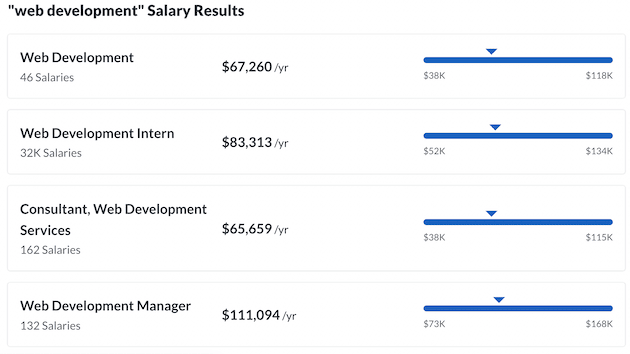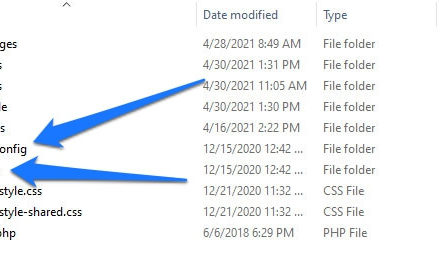If you’re a freelance WordPress developer, you may not know how to price your services. It’s hard to strike a balance between making a substantial profit and not overcharging your customers. If you can’t find a happy medium, potential clients might leave you for the competition.
Fortunately, there are various ways to determine a fair price for both you and your clients. Identifying costs and evaluating competitor rates can give you a good benchmark for your services. That way, you’ll be able to set an attractive price while making the money you deserve.
In this post, we’ll look at why it’s essential to set up the right pricing system for your development services. Next, we’ll dive into some tips on determining your development service pricing. Let’s get to work!
The Importance of Pricing Your Development Services Fairly
Freelance development can be a lucrative career — data suggests that web developers make an average of $75K per year. However, setting a fair price as a freelancer can be tricky, especially if you’re starting out.
You might be tempted to accept any amount that an agency or client offers you. While this approach can function in the short term, you could end up with less money than you’re worth and get burnt out quickly. On the flip side, charging too much can push customers to seek out a better deal elsewhere.
Knowing what other developers of a similar skill set are charging can give you a good benchmark for your services. By doing research, you can inform yourself of pricing models and gauge how much you’re worth.
How to Price Your Development Services (6 Tips)
Now that you know the importance of pricing your development services fairly, here are a few tips to help you!
1. Determine the Market Rate
Knowing the market rate for development work will help you price your own services. You can research what others are charging through freelance resources or developers’ websites. Online resources such as Glassdoor can help you determine the market rate for your skillset:
You can sign up for a free account and filter information based on criteria such as experience, education, and location.
It’s also helpful to determine other factors, like the size and scope of the projects you’ll be taking on, if you want to charge an hourly or fixed rate. You’ll also need to determine the kinds of businesses you’ll be working with. This information can help you set a fair price within the market range.
2. Check to See What the Competition Is Charging
While market research is important, it’s also helpful to dive deeper into the individual rates of web developers. Researching your competition to see what they are charging is the best way to measure where you fall within the pricing spectrum.
The best way to do this is to look at freelance websites such as Upwork and Fiverr:
To get accurate data, search for services such as “web design” or “WordPress development” and look at freelancers’ websites. This method will let you see what comes up in search results and dive deeper into what individuals are charging.
3. Evaluate Your Skill Level
How much you charge will also depend on your skills and experience. For example, if you’re starting in the field, you shouldn’t be charging as much as someone who’s been in the business for five years.
Likewise, if you have supplemental certifications, longer experience, or a higher level of education, you can consider charging more.
For instance, a Bachelor’s degree in computer science or web development would put you at the lower end of the pay scale. However, a Master’s degree or Ph.D. would warrant much higher rates for your services.
Something else you might want to consider is maintaining an up-to-date portfolio of all of your work:
It will allow you to present your work professionally to potential clients. You can also consider displaying customer references, which can help if you want to start charging more.
4. Factor in External Fees
Promoting your skills through word-of-mouth might be less expensive in the short term, but you may not reach a broad audience. That’s why you should consider marketing yourself on freelancer websites to expand your reach.
Unfortunately, many third-party freelancer websites charge ongoing fees or take a cut from your earnings. Sites like Upwork will charge a fee on your earnings, so be sure to factor in those charges when coming up with your rate:
If you choose to forgo freelance websites, you should consider creating your own site. Then you’ll need to factor in the extraneous costs involved in creating and running your website. How much you’ll pay will depend on numerous factors, such as what kind of hosting plan you choose.
Other costs to consider include traveling, phone bills, and marketing efforts. It’s worth tracking all your expenses so that you have a better idea of your overhead costs.
5. Select a Pricing Model
Choosing a pricing model will determine when and how you get paid. There are two typical pricing models: one-time and recurring.
One-time pricing means your customer pays a single amount upfront and receives the product when it’s completed.
On the other hand, recurring pricing is when the customer pays regularly, usually on a monthly or annual basis. This setup allows them to continue receiving support and updates for your product.
The right model for your business will depend on the services you provide for your clients. If you want to sell ongoing support for buyers, a subscription option might be a good choice. On the other hand, a one-time payment plan is a good option if you prefer a project with a pre-determined finish date.
Selecting a suitable payment system will help you stay competitive. It can also help ensure that your services are profitable.
6. Create a Contract
After you’ve set up your pricing, it’s important to create a contract. It will help you clarify details with clients and set expectations that you’re comfortable with.
Consider including certain details in your contract, such as:
- Payment information
- How long the project is expected to take
- If you’ll support the project after its completion
- How many revisions the client can receive
- What happens if the client wants to cancel the project
By drawing up a contract and going over it with your clients, you’ll both be aware of the project timeline, payment requirements, and other restrictions. It’s also worth consulting a lawyer to verify everything is legally sound.
Conclusion
Pricing your development services is an essential part of working as a freelancer. By carefully considering factors such as market rates and your experience, you’ll be able to gauge a price that fits the bill. That way, potential clients won’t be turned off by your charges, and you’ll get paid what you deserve.
To recap, here are six tips for determining prices for your development services:
- Research the market rate.
- See how much other developers with a similar skillset are charging.
- Determine your skill level.
- Factor in external fees such as freelance website charges and marketing costs.
- Choose a pricing model that works best for your services.
- Draw up a contract, so you don’t run into any legal issues with clients.
Do you have any questions about fairly pricing your development services? Let us know in the comments section below!















